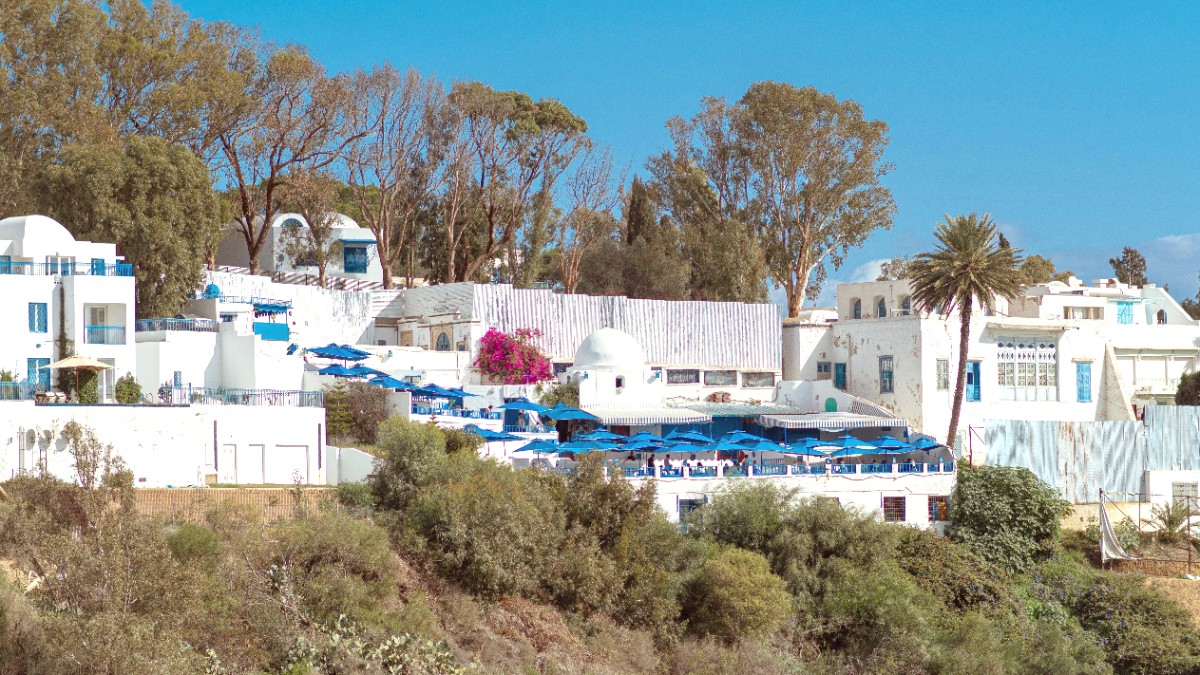
Tunisia
Tunisian cuisine developed over centuries. Various civilizations shaped the region's food. Phoenicians introduced olive oil. Romans brought agricultural methods. Arabs introduced new spices. Andalusian refugees from Spain brought culinary traditions. French colonial rule also left its mark, especially with bread and cafe culture. This history leads to a cuisine with fresh local produce, olive oil, spices, and seafood.
Ingredients: Olive oil, tomatoes, harissa, tuna, eggs, lamb, chicken, couscous, chickpeas, dates, almonds are staples. Flavors: Spicy (harissa), savory, aromatic. Cumin, coriander, caraway, mint are common spices. Sweet flavors come from honey and dates in desserts.
Meals are often social, shared among family and friends.
Accepting offers of tea or coffee is polite, especially in homes or shops.
Bread is a staple. It is used to scoop food from shared dishes.
Steamed semolina served with a rich stew of vegetables and meat (lamb, chicken, or fish). Regional variations exist.
Widely available in most restaurants.
A thin, crispy pastry, similar to filo dough. It is filled with a whole egg, tuna, capers, and parsley, then deep-fried.
This iconic dish is found in most Tunisian restaurants and street food stalls.
A spicy chickpea soup served with stale bread, olive oil, harissa, and often an egg.
A hearty and inexpensive street food, especially in cooler weather.
Small, deep-fried sandwich with tuna, potato, harissa, olives, boiled egg. A quick and satisfying snack.
Deep-fried chopped vegetables (potatoes, peppers, pumpkin) mixed with egg. A side or sandwich filling.
Found in luxury hotels (Four Seasons, The Residence Tunis) and upscale areas like La Marsa. Modern Tunisian or international dishes.
Numerous options exist in Tunis, La Marsa, and Sidi Bou Said. They often serve a mix of Tunisian and international fare.
Ubiquitous in all cities and towns. Look for local "restos" (restaurants) or "malabou" (fast food places).
Available in Tunis and upscale areas like La Marsa and Gammarth.
French, Italian, Asian, and other cuisines cater to diverse tastes.
About 10% is typical for good service.
A translation app assists communication.
Lunch is the main meal. Dinner is later.
Common with meals. Often used to scoop food.
Challenging due to bread and couscous. Communicate clearly about allergies.
Naturally gluten-free foods: Grilled fish, salads, some rice dishes.
Awareness is not as widespread as in Western countries.
Carry an Allergy translation card. It assists accurate communication.
Ojja: Scrambled eggs with tomatoes, peppers, onions, merguez sausage or seafood.
Salade Mechouia: Grilled vegetables finely chopped and seasoned with olive oil, tuna, and hard-boiled eggs.
Steamed semolina with vegetables and meat stew.
Crispy pastry with egg and tuna.
Spicy chickpea soup.
Mint tea is a popular sweet drink. Fresh fruit juices (orange, lemon) are refreshing. Legmi is a sweet palm sap drink.
Celtia is a local beer. Boukha (fig brandy) and Thibarine (date liqueur) are popular spirits. Local wines are available.
Tipping about 10% is customary for good service.
Vegetarian options are common. For severe allergies, carry a translation card.
Lunch is the main meal, dinner is later. Restaurants may close between meals.
Tunisian cuisine uses fresh local produce, olive oil, spices, and seafood. Expect spicy, savory, and aromatic tastes. Bread is a staple and often used to scoop food. Meals are often social affairs.